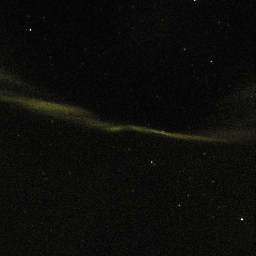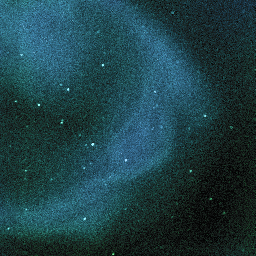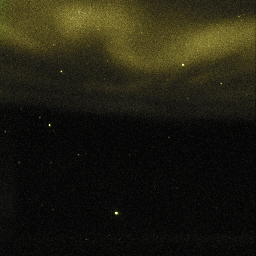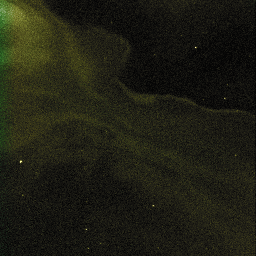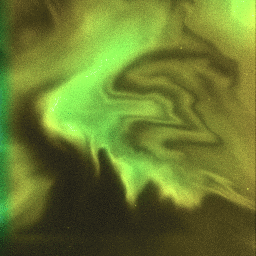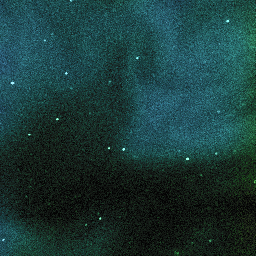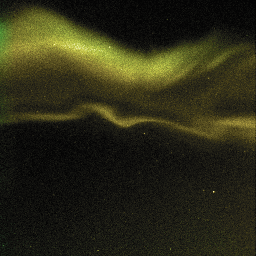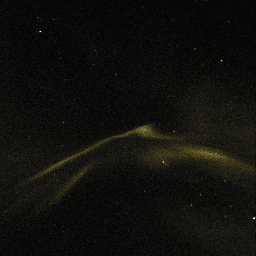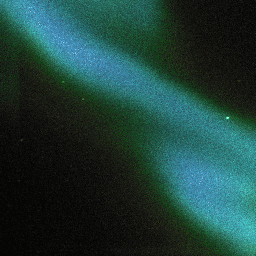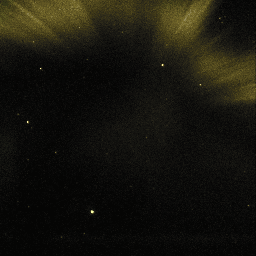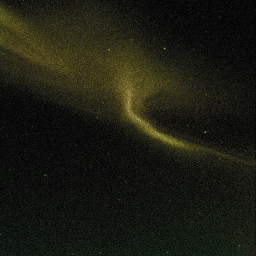
Science of the Month
Monthly Projects
Join us every month to uncover a brand new
Citizen Scientist project!
Each month we will be focusing on a
specially chosen project which
particularly needs YOUR attention;
it may have many classifications/identifications
to be discovered or has a restricted time limit
and needs to be blitz...
So let's all 'Science Blitz' these projects and
see how many identification/classifications we can do
before the Month is through!
December 2020
'All Hands on Deck' to complete as many classification before the month is through!
Use the 'Username and Password' below, to sign into the Zooniverse Citizen Science IOW Account... or create your own account! Explore the Zooniverse and jump into these exciting projects to start classifying...
How does nature create such a
beautiful show?
For this Science of the Month Project we are going to transport you to a magical place, with snow and dark starry sky's, just in time for the Festive Season!
Help the University of Southampton with their camera system called ASK (Auroral Structure and Kinetics) to study the Aurora!
The Aurora Borealis, or 'northern lights', is a natural light show that forms in a ring around the Earth's north pole (which I have on good authority is where Santa lives!), however, don't get the Aurora Borealis mixed up with the Aurora that forms around the South Pole, which is called Aurora Australis. Auroras are created from the collisions of charged particles from space colliding with the gas particles in the Earth's atmosphere.
'AURORA Zoo
Zooniverse Project'
Help the Researchers to understand how energy is transferred from
BEFORE YOU START:
This project contains 2 different Data Sets and is almost completed, so it needs all hands on deck to finish this project before the New Year!
When you click 'CLASSIFY' on the webpage it will take you to the 1st Data Set which has been completed, however, don't be disheartened, as if you go back to the original Aurora home page and scroll down to just above the: 'Join in Talk and % tally area', you will find a button called: 'Aurora Shapes and Motions', which will take you straight to the 2nd Data Set. Happy classifying!
space into our atmosphere, and what it does when it gets there! Using images from the ASK camera system in the high Arctic together we can learn more about the northern lights and the science behind the beautiful shapes they form.

November 2020
This project has finished on: 16th November 2020
Use the 'Username and Password' below, to sign into the iSpot Citizen Science Account
to view all the 'Bioblitz Finds' we logged and uploaded onto the iSpotnature website!
Username:
Citizen Science IOW
Password:
SquirrelDell9
Help us countdown to the NBN Conference on Wednesday 18 November by joining a mini Bioblitz with iSpot to capture a map of autumn’s wildlife!
These are challenging times, but being around nature helps us cope and is good for our wellbeing. So, let’s do this collectively, sharing observations of what we can see around us.
The Conference is online this year and being held in collaboration with iSpot, the Open University’s citizen science platform for biodiversity. From now until Monday 16 November please join us in taking a little time away from computer screens to get involved in this interactive activity, from wherever you are, capturing and sharing snapshots from nature.
Please do follow the latest COVID-19 guidelines.
Autumn Bioblitz 2020 will run from NOW until:
Monday 16 November.
So let's 'blitz it'
before the deadline runs out!!

You can chose any green space to survey, from gardens to the local park.
Record/take a picture of as many species you see then upload it onto the ISPOT website!
NBN Conference iSpotnature
Autumn Bioblitz
TIME:
Take as long or as little time as you want
Username:
Citizen Science IOW
SquirrelDell9
Password:
November 2020
This project has finished on 29th November 2020
Towns and cities are busy, noisy places, but it’s here that most of us live and encounter nature day-to-day.
We know the importance of connecting to nature for our own health and wellbeing, and by monitoring wild mammals, it gives us an indication of the ‘green health’ of our communities. So whether you have hedgehogs under your hedge or even a pine marten on your patio, join in with Living with Mammals this autumn.
Living with Mammals Survey 2020 will run from
Monday 31 August to Sunday 29 November.
So it particularly needs everyone to 'blitz it'
before the deadline runs out!!
You can chose any green space to survey, from gardens to the local park.
Record the mammals you see each week and any signs they might leave behind, such as footprints or droppings.

Please check the current government guidelines to help you decide if it is appropriate and safe for you to visit public green spaces during the
COVID-19 outbreak.
'Living with Mammals
Survey 2020 '
TIME:
Once a week until the Project Ends

October 2020
This Zooniverse project is still active!
Use the 'Username and Password' below, to sign into the Zooniverse Citizen Science Account!
or create your own account!
Explore the Zooniverse and jump into these exciting projects to start classifying...
'Etch A Cell - VR' has been created to analyse images of a cancer cell. With your help, this project will generate data that will be used to help improve understanding of cell biology.
One of the approaches will be used to look at the data produced and to create a virtual reality (VR) experience. In this experience it will be possible to ‘walk around’ on the surface of the cell and then move inside to explore the inside of the cell.
That is why they need your help to study images of cells that were produced using an Electron Microscope (which produce images of molecules, cells and tissues at a very high level of magnification).
An important step in studying these images is called “segmentation”; this is where someone (volunteer Citizen Scientist) draws around structures of interest in the image.
They hope that these projects will advance our ability to analyse biological structures using electron microscopy and segmentation. With enough volunteer help together we may be able to train computers to segment automatically. This has huge potential to help us understand biology and study disease!
'Etch A Cell - VR'

Virtual reality can be used to visualize complex data. With your help, we will generate a new data set that will be used to create a new virtual reality experience






TIME:
Take as long or as little time as you want
September 2020
This Zooniverse project is still active!
Use the 'Username and Password' below, to sign into the Zooniverse Citizen Science Account!
or create your own account!
Explore the Zooniverse and jump into these exciting projects to start classifying...
"There’s still no substitute for the human eye when it comes to recognizing subtle motions in astronomical images."
TIME:
Take as long or as little time as you want

Is there a large planet at the fringes of our solar system awaiting discovery, a world astronomers call Planet Nine?
We’re looking for this planet and for new brown dwarfs in the backyard of the solar system using data from NASA's Wide-field Infrared Survey Explorer (WISE) mission. But we need your help!
Search the realm beyond Neptune for new brown dwarfs and planets.
Finding these dim objects requires combing through the images by eye to distinguish moving celestial bodies from ghosts and other artifacts. There are too many images for us to search through by ourselves. So come join the search, and you might find a rogue world that's nearer to the Sun than Proxima Centauri---or even the elusive Planet Nine.
'BACKYARD WORLDS: PLANET 9'
August 2020
This project has finished on 9th August 2020
Big Butterfly Count 2020
The Big Butterfly Count is a nationwide citizen science survey aimed at helping us assess the health of our environment.
It was launched in 2010 and has rapidly become the world's biggest survey of butterflies. Over 113,500 citizen scientists took part in 2019, (which included the Downside Community Centre, Pan, Newport,
Isle of Wight as well!) and we all collectively submitted 116,009 counts of butterflies and day-flying moths from across the UK.
The Big Butterfly Count 2020 will run from
Friday 17 July to Sunday 9 August.
So it particularly needs everyone to 'blitz it'
before the deadline runs out!!
Just 15 mins of your time is needed, and any outside space you have safe access to. This is a great survey to do with children,
if you happen to have 1 or 2 to hand!

TIME:
15 mins
Supported by:
-
Sir David Attenborough, President of Butterfly Conservation
-
Alan Titchmarsh MBE
-
Chris Packham and Nick Baker, Vice Presidents of Butterfly Conservation
-
The actress Joanna Lumley OBE
July 2020
This project is still active
Forest 404 Experiment
Get involved to help us explore peoples' responses to
nature based sounds and poetry.
Stressed or tired after a long day?
Listening to poetry and nature sounds
might help you feel better.
This project is perfect for everyone with ears no eyes required although fingers are needed to type - either yours or a bubble family or friend! Take part in a ten minute experiment and help us understand how people respond to the sounds of the natural world.

TIME:
10 mins
June 2020
This project is still active
OU Pollinator Watch

Following on from Springwatch 2020,
The Open University invites you to:
-
Share your observations and photos of insect pollinators to discover more about them.
-
Find out how to identify a selection of insect pollinators.
-
Learn why insect pollinators are important and why they need our help.
TIME:
Set your own pace
